Take my right hand — the holy hand — and let us venture through the minds of Molly Joyce and Jerron Herman.
In the duo’s latest presentation at the UCLA Nimoy Theater in Westwood on May 3, they explored the implications of the left and right in a piece appropriately titled Left and Right. The performance directed by Austin Regan mixes Joyce’s music with Herman’s movement to meditate on the historical context of hands and the complexities of asymmetry in three equally separated sections: Dualism, Overuse/Underuse, and Asymmetry.
The performance was in the round with text-filled projections around the stage. The show began with a brief introduction of the right and left hand displayed on the screens. The right hand is considered holy while the left hand is considered “perverse.” The screen poignantly stated, “Raising the right hand symbolizes bravery, power, and virility while the left hand is held lower, symbolizing inferiority, destruction, and burial.”
Herman scooped his right hand over and over again, raising it above his head. The action harked on that last bit of text the audience received. His body carved through the space like a knife, paving a path around Joyce. His left hand remained tucked into his body. It was later revealed in the talk-back that he and Joyce have congenital disabilities, with his affecting his left hand. With this in mind, the theme of left vs. right carried a different weight.
The crux of the performance centered on embodying disability. Careful steps were taken to make the show accessible, even including ASL interpreters Desiree and Jasmine Monroy on stage as performers of the piece.
Before moving into the next section, a prompt was projected on the screen. Audience members were encouraged to scan a QR code and respond on their phones. Including technological engagement with the audience is always a risky undertaking. However, the duo introduced the element smoothly. Herman brought out his own phone and modeled what had to be done for the viewers to mimic. Without saying a word, the message was clear. Responses filled the screen and were recited through Joyce’s computer. It was enlightening to see the responses but watching them fade for the next section felt jumbled without a proper unpacking. It initiated a one-sided dialogue as the performers took the audience’s reactions and shoved them away for the next section.
Overuse/Underuse told the story of a winged genie of Assyria, a mythical being that represents fertility and pollinates a sacred tree. Herman walked around the perimeter of the Nimoy, stepping onto the second level to get closer to the audience. He embodied the winged genie while Joyce’s lyrics continued to present the dichotomy of the left and right. Although disconnected at first, the two narratives came together when she sang, “are you my pain / are you my wing.” The movement itself was delectable. Herman let his hand be the guide. With each swing and swoop, he pivoted at the hip to lean up and down with a viscous texture at a steady tempo.
Herman set the bucket on stage, pulling long blue fabric out as if christening the stage. And in one last heaping pull, an iridescent drape erupted from the bucket and covered Joyce. In the blue light, every inch of the fabric shimmered. Leading into Asymmetry, the blue and iridescent fabrics rested on the ground like sitting water. The section reflected on the inevitability of asymmetry. In the talk-back, an audience member even pointed out how the painter’s tape on the ground separating the right from the left was asymmetrical. Although unintentional, Regan said it only helped prove the point.
Asymmetry was disruptive — the music grew louder and churned like an upset stomach while the movement followed suit with thrashing limbs. Once the performers found a moment of acceptance, the music turned down to a hum and Herman stood at the center, hinging forward at the hips and letting out a deep, guttural breath at each heave down. The mixture of sounds and imagery represented a final moment of stasis. Left and Right was not flawless, but it was also not meant to be. The show was dedicated to inviting viewers to think introspectively about the opposing sides and our unbalanced reality. Just like the final slide of text suggested, the features of the left and right will never match. That is what makes it beautiful.
To learn more about what is happening at the UCLA Nimoy Theater, please visit their website.
Written by Steven Vargas for LA Dance Chronicle.
Featured image: Left and Right by Molly Joyce and Jerron Herman – Photo by Bailey Holiver.

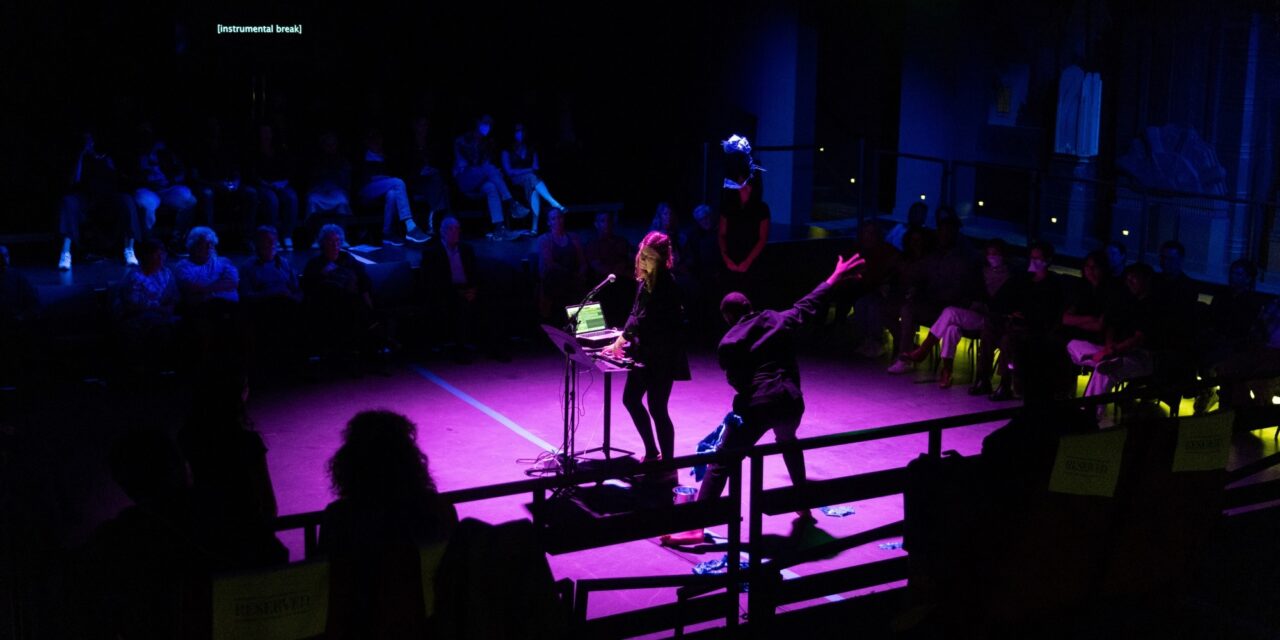
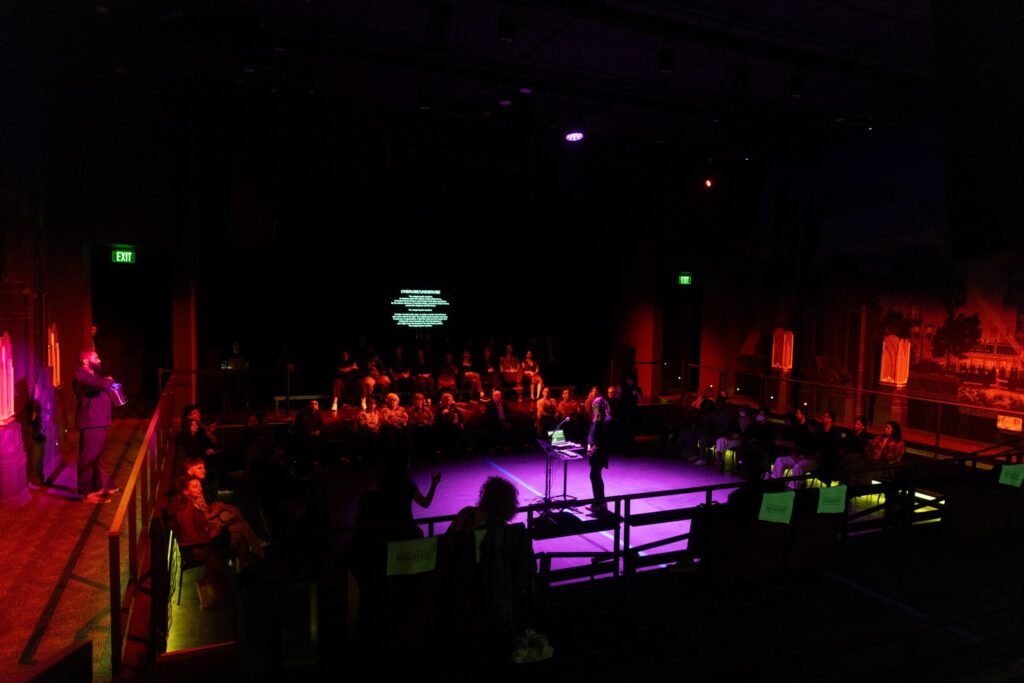
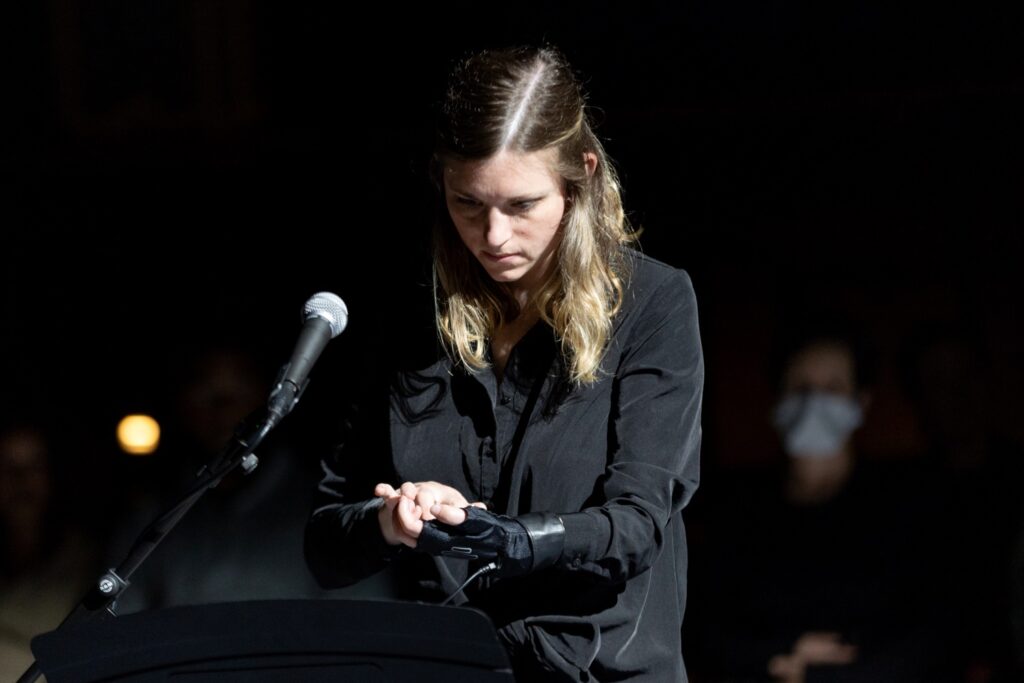
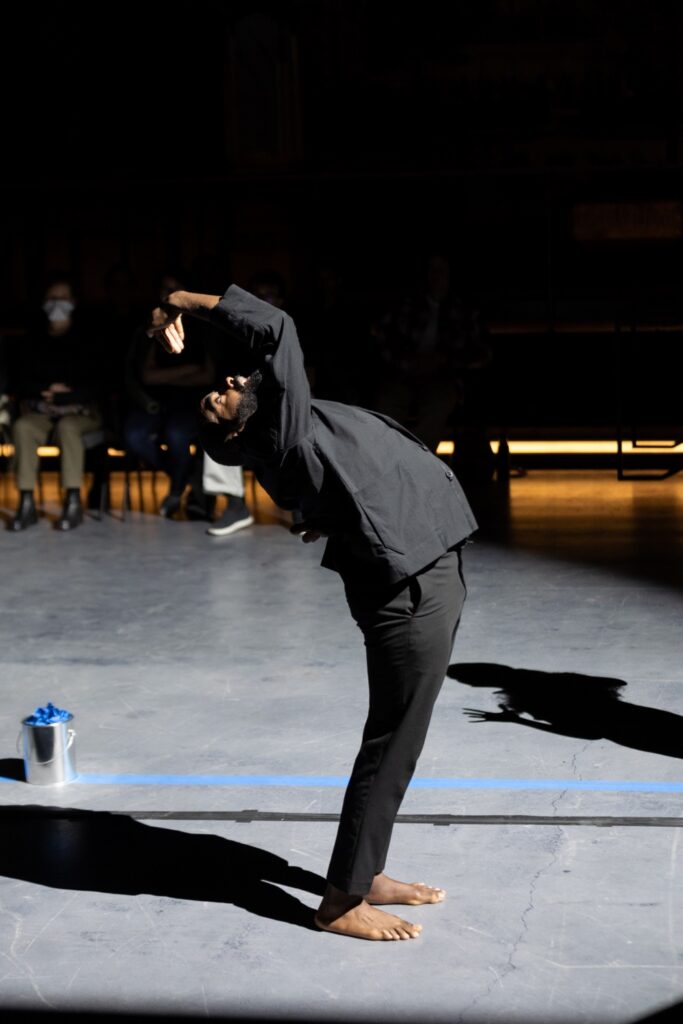
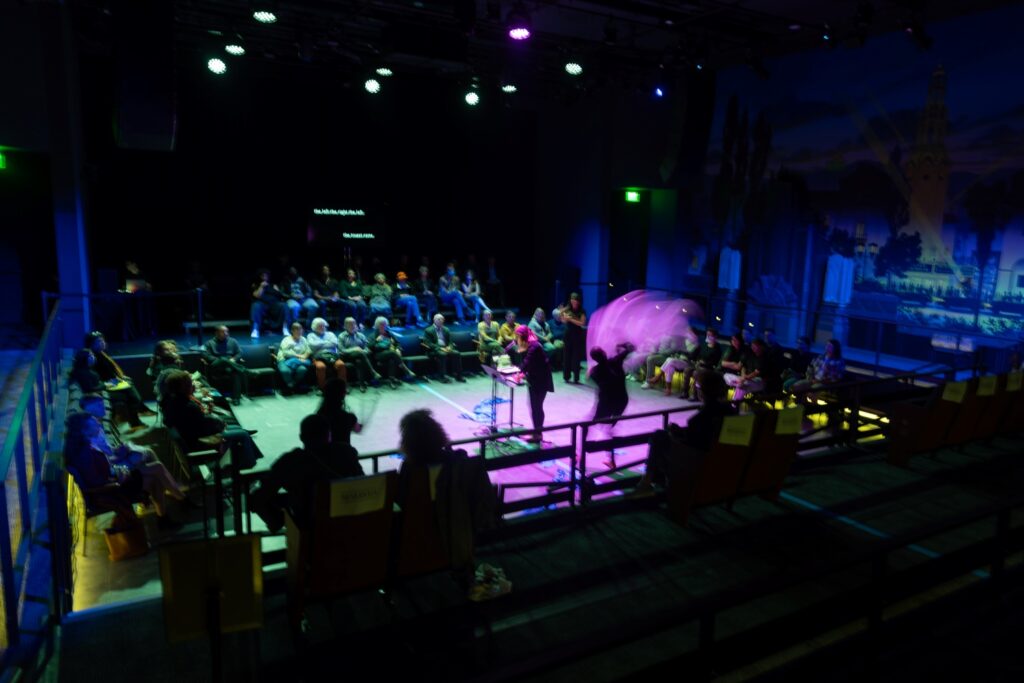
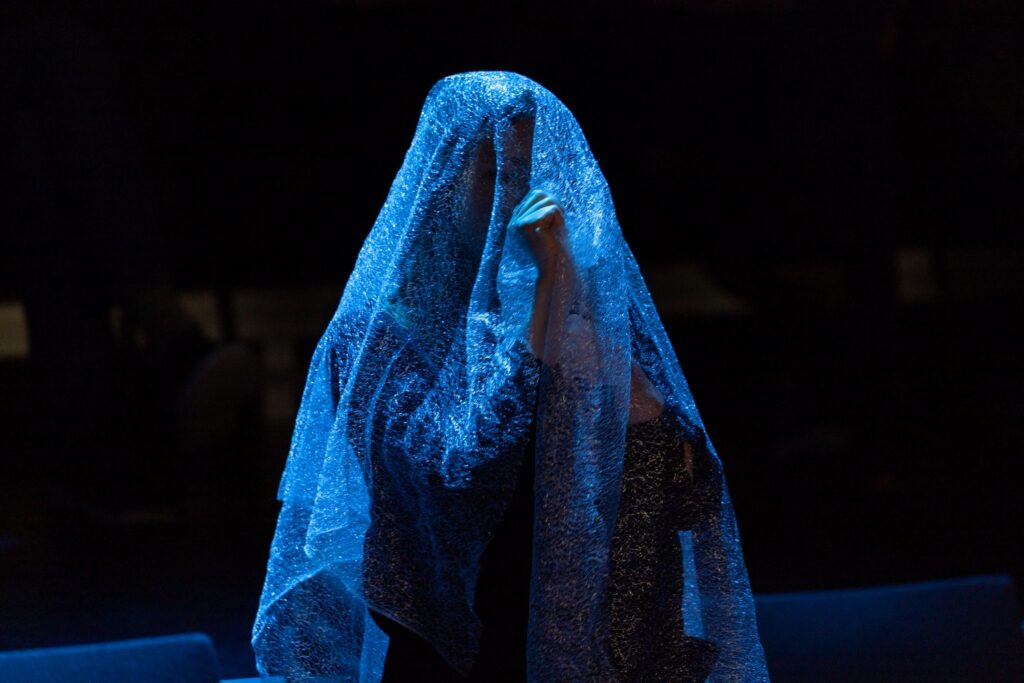
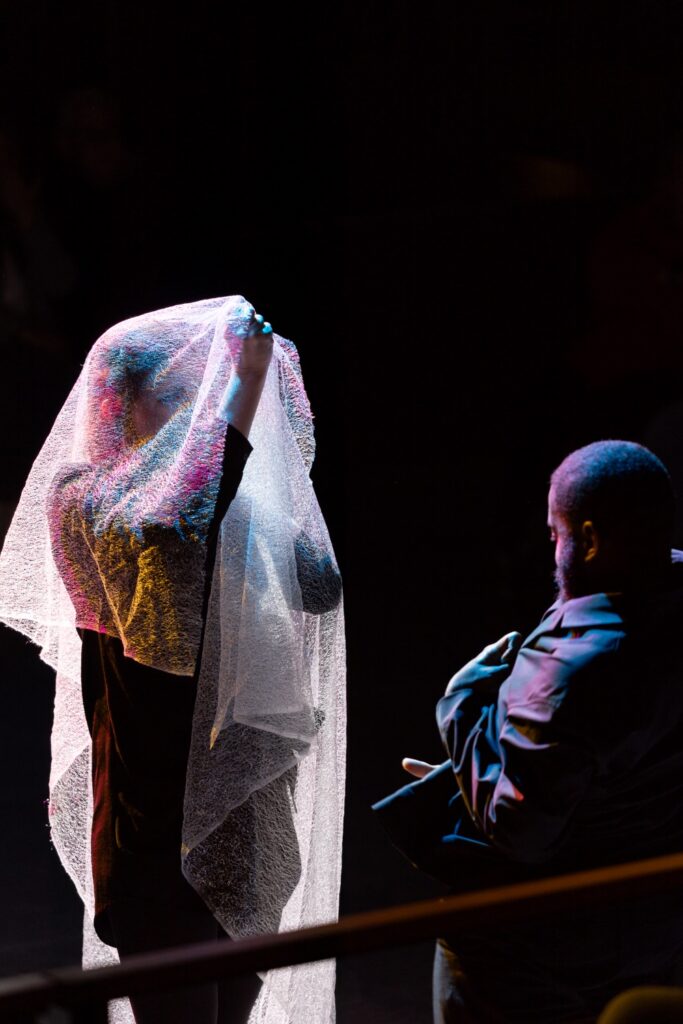
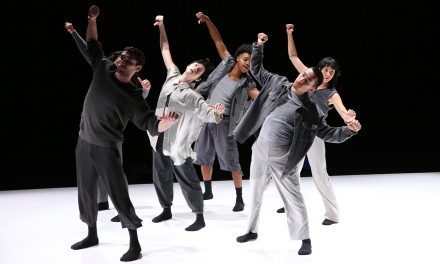
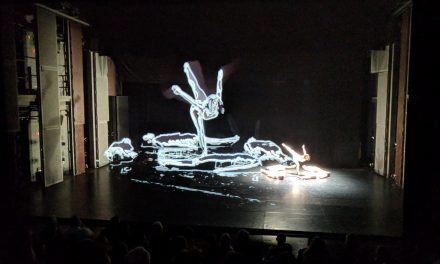
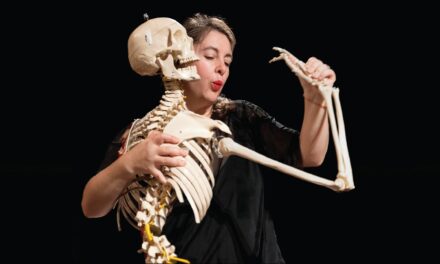



Trackbacks/Pingbacks